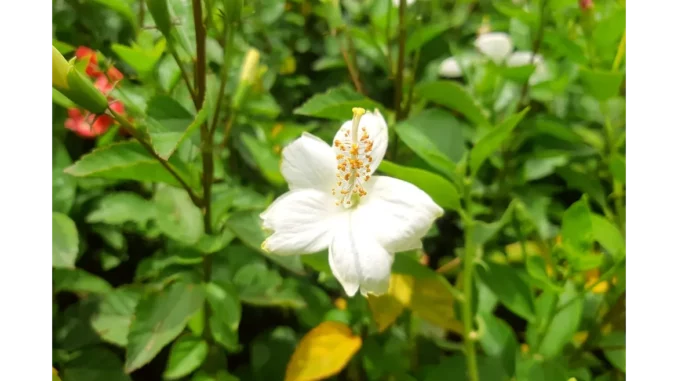
Crafting a Mesmerising Garden: The Art and Science of Design
Turn your garden into a year-round luxurious retreat by the craftsmen at Elegancia.homes.
Creating a captivating garden that leaves a lasting impression is both an art and a science, requiring a nuanced understanding of plant selection, design principles, and the unique characteristics of your landscape. With thoughtful combinations of various elements, you can cultivate a garden that not only delights the senses but thrives throughout the seasons. This guide explores the art of pairing perennials for visual splendour and delves into practical considerations for plant selection and garden design.
The Art of Pairing Perennials for Visual Impact
One of the most rewarding aspects of gardening is the opportunity to experiment with plant combinations that result in visually arresting displays. Perennials, with their diverse spectrum of colours, shapes, and textures, offer endless possibilities for creative pairings. Here are some inspired perennial planting combinations to elevate your garden’s beauty:
-
Roses and Complementary Perennials: Roses stand as timeless icons of elegance and structure in any garden. Pair them with complementary perennials to further enhance their splendour. For example, the pink ‘Knock Out’ rose forms a striking partnership with blue salvia, creating a vibrant contrast that captivates the eye.
-
Native Plants for Effortless Charm: To cultivate a vibrant garden with minimal upkeep, consider native plants like coneflower and black-eyed Susan. These resilient perennials are not only drought-tolerant but also attract pollinators, infusing your garden with life and movement.
-
Contrasting Flower Shapes: Mixing perennials with varied flower shapes adds depth and interest to your garden. The tall, spiky blooms of veronica contrast beautifully with the flat, rounded flowers of coneflowers, creating a dynamic visual display.
-
Shade-Loving Pairings: Illuminate the shaded areas of your garden with perennials like hosta and astilbe. The rosy-red flowers of astilbe, when paired with the lush foliage of hostas, cultivate an inviting atmosphere even in low-light conditions.
-
Seamless Seasonal Transitions: Extend your garden’s blooming season by blending early-bird perennials with spring bulbs. Planting bulbs such as anemones and crocuses among perennials ensures a continuous display of colour as the seasons shift.
Practical Considerations for Plant Selection
While imaginative combinations can enhance your garden’s aesthetic allure, practical considerations are vital for ensuring long-term success. Here are key factors to bear in mind when selecting plants:
-
Area Measurement: An understanding of the available space is crucial for effective garden planning. Measure your garden area and sketch a rough layout to visualise how different plants will fit. This helps prevent overcrowding and ensures each plant has ample room to flourish.
-
Soil Type and pH: Plants have distinct soil preferences. Conduct a soil analysis to ascertain the pH and nutrient content of your soil. This information will guide you in choosing plants well-suited to your garden’s soil conditions.
-
Sun and Shade Dynamics: Assess the sunlight and shade your garden receives throughout the day. Some plants thrive in full sun, while others prefer partial or full shade. Understanding these dynamics will aid in selecting plants that will prosper in your environment.
-
Wildlife Considerations: Consider the presence of wildlife in your area. Certain animals, such as rabbits and deer, may pose a threat to your plants. Opt for plants less appealing to these creatures or implement protective measures to safeguard your garden.
Creating a Harmonious Design
A well-designed garden transcends a mere collection of beautiful plants; it embodies a harmonious composition that mirrors your personal style. Here are some design principles to consider when planning your garden:
-
Colour Schemes: Utilise the colour wheel to guide your plant selections and create a cohesive colour scheme. Whether you prefer complementary colours for vibrance or analogous hues for harmony, the colour wheel can help achieve your desired effect.
-
Mass Planting for Impact: Planting in groups of odd numbers, such as threes or fives, can create a more natural and impactful appearance. Mass planting draws the eye and fosters a sense of abundance and vitality in your garden.
-
Incorporating Foliage and Texture: Do not overlook the significance of foliage and texture in your garden design. Plants with intriguing leaf shapes and textures add depth and dimension, even when flowers are not in bloom.
-
Year-Round Visual Interest: Plan for perennial interest by selecting plants that offer aesthetic appeal in various seasons. Consider integrating evergreens, ornamental grasses, and plants with colourful bark or berries to maintain vibrancy even in the off-season.
By thoughtfully selecting and pairing perennials, considering practical factors, and applying design principles, you can create a garden that makes a stunning first impression and provides enjoyment throughout the year.


Be the first to comment